#zingiberaceae
Text
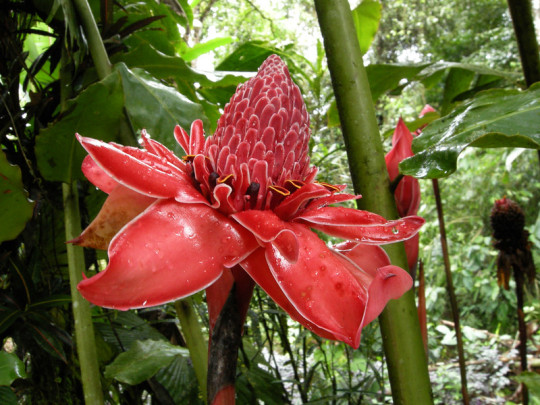
An Etlingera Flower blooms in Costa Rica
by Frank Vassen
#flowers#flora#plants#etlingera#Zingiberaceae#Zingiberales#plantae#flora: costa rica#flora: central america
184 notes
·
View notes
Text
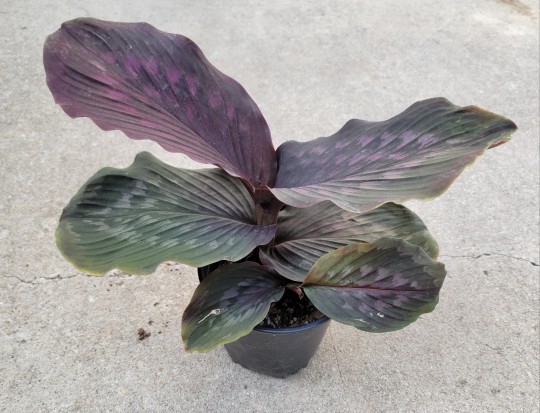
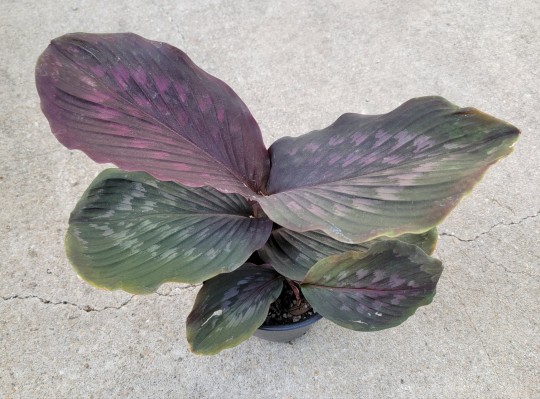
Kaempferia 'Pink Lace'.
23 notes
·
View notes
Text
Canangas-do-japão (Flor-da-Terra) - Família Zingiberaceae

Reino:Plantae Divisão:Magnoliophyta Classe:Liliopsida Ordem:Zingiberales Família:Zingiberaceae Género:Kaempferia
Descrição das Canangas-do-japão
Flor duma beleza rara e dona de um perfume maravilhoso, a cananga-do-japão, ( Flor-da-Terra, Flor-da-Ressurreição, Lírio-Misterioso e sendo parente do gengibre, às vezes é chamada de "peacock ginger" (gengibre-pavão), devido ao colorido das suas folhas) é uma planta herbácea, rizomatosa, de folhagem e floração peculiares e ornamentais.
As folhas da Canangas-do-japão são grandes, erectas, largas, de cor verde-pálido, com manchas regulares centrais de cor verde-escura,com a parte inferior das folhas de tonalidade roxa e bronzeada. Atinge cerca 30 a 60 cm de altura.
Flor-da-Terra são flores delicadas e perfumadas
As flores delicadas e perfumadas, apresentam duas pétalas superiores e sépalas de cor rosa claro e duas pétalas inferiores rosa arroxeadas. O conjunto das pétalas lembra orquídeas e amores-perfeitos no aspecto.
Na primavera, surgem inicialmente as flores, brotando directamente do solo, em seguida, as primeiras folhas de uma linda folhagem entouceirada aparece, para aproveitar todo o calor e a luz da primavera e verão.
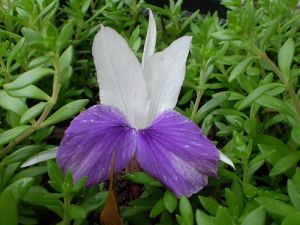
Rico em substâncias de reserva,o rizoma da planta permite que entre em dormência no inverno, com o amarelecimento e queda das folhas.
Originaria da Ásia(Japão) prefere ambientes quentes e húmidos e deve ser cultivada sob sol pleno ou a meia sombra. A ideia é que o ar que a circunda tenha sempre humidade, podendo tê-la próximo a fontes de água. As regas devem ser moderadas, pois em excesso pode levar ao apodrecimento dos bulbos ou surgimento de fungos.
Na medicina popular, os rizomas são usados em tratamentos de pele. São triturados - frescos ou secos - e misturados com água até formar uma pasta.

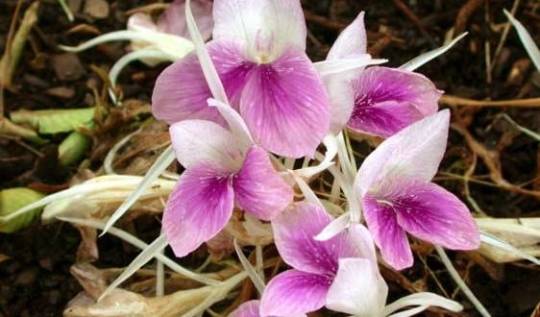
Read the full article
0 notes
Video
n325_w1150 by Biodiversity Heritage Library
Via Flickr:
Monandrian plants of the order Scitamineae :. Liverpool :George Smith,1828.. biodiversitylibrary.org/page/29960566
#Canna#Cannaceae#Marantaceae#Zingiberaceae#Missouri Botanical Garden#Peter H. Raven Library#bhl:page=29960566#dc:identifier=http://biodiversitylibrary.org/page/29960566#flickr#globba saltatoria#Globba radicalis#Globba#botanical illustration#scientific illustration
0 notes
Text
MIXEDX Lesbian Therapist Amirah Adara Helps Romy Indy With Inner Desires
Milf fingering teens pussy
Tres mexicanos ardientes
Longlegged brunette gets mouthfucked
Ebony squirter anal fucked lezdom
asiatica pechos enorme besando sexo caliente
Older men young boys blowjob videos gay Say Hello to Compression Boy
Muscled black mistress whips male slave
Yummy blond girl gets her pussy screwed on a massage table
Kate Bloom
#chosing#miliolite#Hippelates#reveller#suffusions#wirestitched#unquadded#aziraphale#overwily#vinaigrettes#toxinfection#perceive#inhabits#Zingiberaceae#unsolvableness#perenniality#cochleare#copse-covered#phasianoid#hackeries
0 notes
Text
Cardamom
"Cardamom (/ˈkɑːrdəməm/), sometimes cardamon or cardamum, is a spice made from the seeds of several plants in the genera Elettaria and Amomum in the family Zingiberaceae"
0 notes
Photo
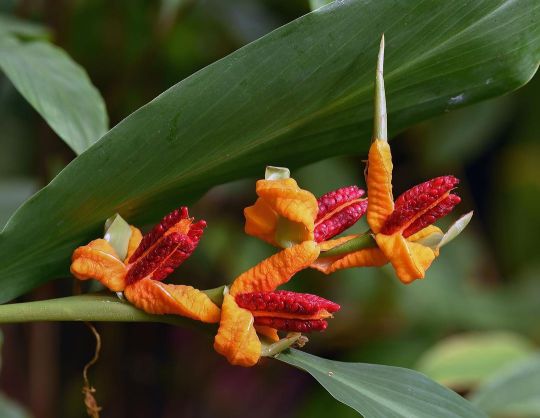
Hedychium horsfieldii's common name is the Java Ginger. #Hedychiumhorsfieldii #Hedychium #horsfieldii #javaginger #CUgreenhouse #ginger #zingiberaceae (at CU Greenhouse) https://www.instagram.com/p/CkoUWPGOjzw/?igshid=NGJjMDIxMWI=
1 note
·
View note
Text
Mmmmmm the fun thing about being Native is that I can be inspired by my tribe in making a fantasy one. Arkhe's tribe invented the scientific naming convention for plants and animals in his universe because they're super smart and awesome. Their last names are all plant families because plants are fucking cool and they all have chlorokinesis. I have the power at my fingertips.
#I respect ginger staving away my category 7 tummy ache events so the medicine men are named Zingiberaceae#we invented lots of the stuff used in modern medicine let me have this#it's so easy to do this without throwing real tribes under the bus this is so fun#that may be the euphoria of being a Native artist talking I suppose#I'm Native and am obsessed with nature and greenery so I theme my Native OCs around nature and greenery#still unlearning the fact that me being inspired by my actual ancestors isn't the same as the bitch that wrote Twilight#BUT. It's FUN so it's not as hard as I thought it'd be at first
4 notes
·
View notes
Text
Are they related? Food vs Food
How often do you look at foods in the grocery store, back and forth between two items thinking 'This looks exactly the same. Are they exactly the same? How are they not the same?" and no, I'm not talking about the processed repackaged foods and you're looking at 40 different kinds of tomato sauce. I'm talking about the produce lane.
Sure in some cases it's obvious they're not EXACTLY the same. But they must be related. Right? Well, sometimes they are, some times they're not, and some of these may surprise you. I know they surprised me!
Cucumber Vs Zucchini

I think anyone looking at these two would assume they're related. They're both long with dark green skin and light green flesh. When eaten raw and unseasoned, they also have a similar taste. However, these are two completely different foods.
The zucchini is a type of gourd, being more closely related to a Pumpkin. The cucumber is a Melon and is more closely related to the Watermelon. ....alright fine, technically gourds are a type of melon, still making them related; but my point remains! Try eating a cucumber with some sweetener like sugar or honey and it'll taste like watermelon. Won't work with zucchini.
Both cucumbers and zucchini are related to Fidelity, Chastity and general sex and Lust magic. But cucumbers are also associated with youth, beauty, glamor, stress relief, and rejuvenation. There was an old superstition that cucumbers had to be planted by young men in order for the crop to be successful.
Parsley Vs Cilantro
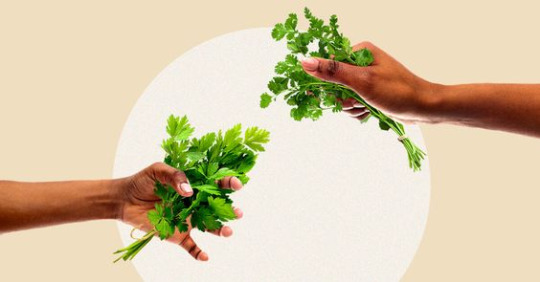
At a glance, these two herbs can easily be mistaken for the same thing. But once eaten, the difference is very clear. Cilantro (Also called Coriander) has a strong, lemon pepper taste; while Parsley is mainly an aromatic with a Lighter earthy taste.
People who love Cilantro might be perplexed by the hate it gets. Sure it's a strong taste but it's not overpowering. Well it turns out Cilantro is related to Fennel. Which is also related to licorice. It turns out, if your DNA is set up one way, these foods taste great. But if your DNA is set up another way, these foods taste TERRIBLE. My partner describes Cilantro as tasting like soap. So we stick with Parsley.
Superstitious farmers used to refuse growing parsley. See, parsley only grows back every other year. So, because of how long it takes to grow, it was believed parsley had to travel to hell and back 7 to 9 times. This was to try and convince the devil to give it permission to grow. And if the devil did not give the parsley permission to grow, the people who planted it would die. Was dubbed The Devil's Oatmeal.
Cilantro is a great protection herb. Protect the home, protect the garden, protect your health, protect your secrets. Parsley is also good for protection, but also has more general uses. Cleansing, Attract love and prosperity, Wisdom, commune with spirits; parsley has a long history in Rome of using to honor the dead and wear to enhance thinking power.
Ginger Vs Turmeric

Both roots, often eaten together as a seasoning. They look very similar; they must be related. Well, you'd be right! They are both part of the Zingiberaceae family. Both have strong anti inflammatory properties and have been used in natural remedies.
They still have very different tastes, however. Ginger will have a fresh, somewhat spicy taste. Turmeric is a bit heavier and earthier. Turmeric is also recognizable for it's bright yellow orange pigment. It's known to stain and dye.
Because they are roots, both Ginger and Turmeric have good Grounding properties. They are also both good for healing, cleansing, purification, prosperity and protection. But then we start to split off. Ginger is great for raising one's personal power, success, new experiences, passion, and general energy. Turmeric is better for communication, family relations, courage, confidence, beauty, memory, and honesty.
Peach vs Nectarine

So what's the deal with these two? They look a lot a like. They smell a lot a like. They taste a lot a like. Are they the same fruit? Well no. But also yes. It's kind of interesting.
A peach is just a fuzzy nectarine. Their genetic composition is structured in a way they they are identical except for one difference that occurred naturally, stopping the fuzz from growing on peaches. Giving us nectarines. They are exactly the same in every other way. Which is hilarious because I remember growing up, I hated nectarines but loved peaches. I think the peaches were just grown local so they tasted better.
I want to be clear, this genetic deviation is a naturally occurring mutation. It was not a result of science or GMOs or any kind of known human interference.
Peaches are a very spiritual fruit. They are linked to wisdom, happiness, harmony, longevity, love and protection. Nectarines....would probably be an acceptable substitute.
#food and folklore#food magic#food correspondence#similar foods#food folklore#food history#food facts#magic#kitchen witch#kitchen witchcraft#witch#novemeber#folktale#folklore#klickwitch#peach#parsley#cilantro#ginger#turmeric#cucumber#zucchini#nectarines
16 notes
·
View notes
Photo

Water cane is an important medicinal plant used for millennia in India and Asia and which also served as a perfume and culinary spice among the Romans.
The Water Cane, Costus or Coste (Cheilocostus speciosus) is native to the Malay Peninsula of South Asia, but is naturalized in many Pacific islands. It is part of the Zingiberaceae family, like ginger and turmeric (rea tahiti) . It is a plant that is distinguished by large dark green leaves arranged around long spiral stems that emerge from underground rhizomes. The bract is a dark red cone from which emerge trumpet-shaped flowers with pleated white petals that look like crepe paper, giving the plant its Anglo-Saxon name of ginger crepe.
19 notes
·
View notes
Text

Le curcuma de Madagascar
Le curcuma de Madagascar est une épice exquise, reconnue pour sa couleur vive et son goût ensoleillé. Appartenant à la famille des Zingiberaceae, cette plante ajoute une touche d'éclat à vos plats, qu'elle soit utilisée fraîche ou séchée, réduite en poudre. En effet, ses propriétés colorantes en font un ingrédient polyvalent pour donner de la vivacité à vos recettes, que ce soit en assaisonnement pour une crème, une soupe ou un velouté, ou même pour agrémenter des marinades.
Mais ce n'est pas seulement pour son aspect esthétique que le curcuma est apprécié. Ses racines renferment de véritables trésors, riches en composés bénéfiques pour la santé. Une fois moulues, ces racines dévoilent leur pouvoir tant au niveau gustatif que thérapeutique. En effet, le curcuma est un antidote ancestral, utilisé depuis des siècles pour soulager divers maux. Son intérêt en matière de santé réside particulièrement dans ses effets antioxydants et anti-inflammatoires, qui peuvent contribuer à prévenir et à traiter plusieurs affections.
Pour préserver ses qualités gustatives et ses bienfaits pour la santé, il est recommandé de conserver le curcuma de Madagascar dans des conditions optimales. En raison de sa propension à perdre rapidement son arôme, il est préférable de le stocker dans une boîte hermétique et opaque, à l'abri de la lumière et de l'humidité. De cette manière, vous pourrez profiter pleinement de ses saveurs exquises et de ses vertus médicinales.
En somme, le curcuma de Madagascar est bien plus qu'une simple épice. Symbole de soleil et de vitalité, il apporte une touche de chaleur et de bien-être à vos plats, tout en contribuant à votre santé et à votre bien-être général. Invitez donc cette épice précieuse dans votre cuisine et laissez-vous envoûter par ses multiples facettes. https://presentslointains-madagascar.com/pages/coffrets-cadeaux-epices-pour-entreprises-et-particuliers
https://presentslointains-madagascar.com/pages/coffrets-cadeaux-epices-pour-entreprises-et-particuliers
2 notes
·
View notes
Text

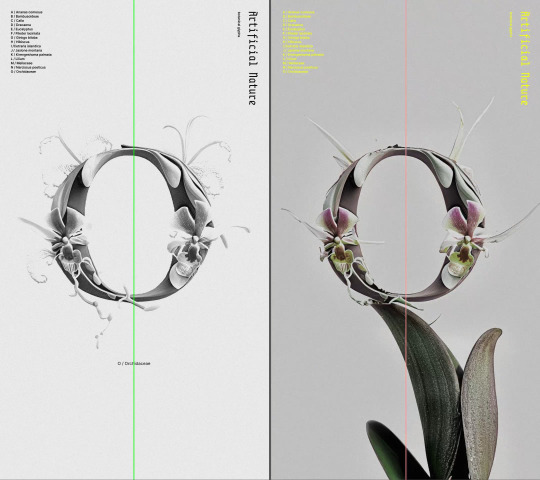

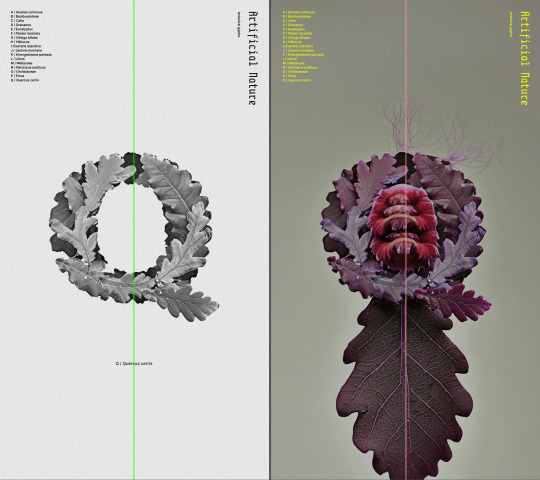







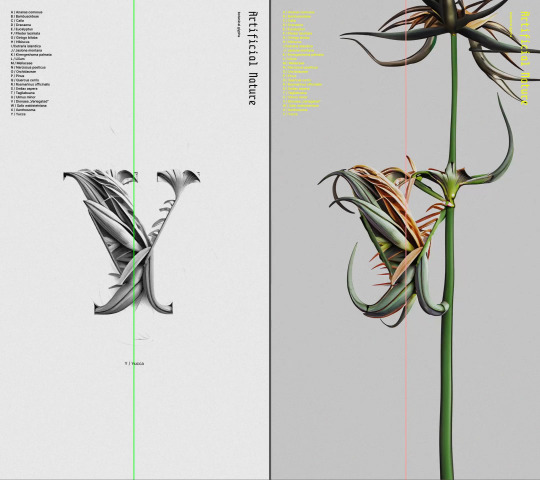

N / Narcissus poeticus
O / Orchidaceae
P / Pinus
Q / Quercus cerris
R / Rosmarinus officinalis
S / Smilax aspera
T / Tagliabuana
U / Ulmus minor
V / Dionaea „Variegated“
W / Salix waldsteiniana
X / Xanthosoma
Y / Yucca
Z / Zingiberaceae
2 notes
·
View notes
Photo





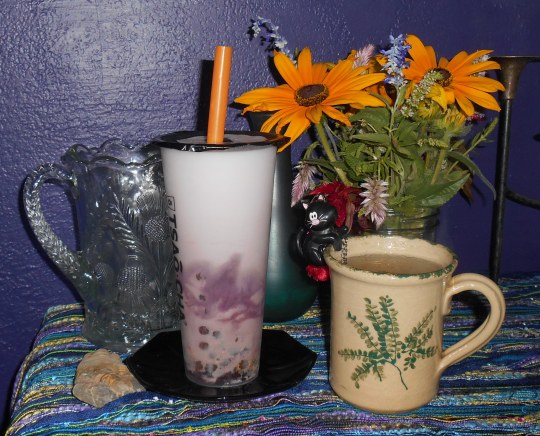


I only exist as an internet phantom these days so I observed Botany 2022 by trying to "collect" as many plant families as possible in my bubble tea and other drink selection during the online conference.
Day 1: Fuku Tea blueberry black tea with lychee jellies and a blue butterfly pea lemonade. Families: Teaceae (tea family), Poaceae (grass family, sugar), Ericaceae (heath family, blueberry) Sapindaceae (soapberry family, lychee) Rutaceae (citrus family, lemon) Fabaceae (bean family, blue butterfly pea)
Day 2: Donkey Coffee vanilla chai latte. Families: Orchidaceae (orchid family, vanilla), Zingiberaceae (ginger family, ginger, cardamom), Apiaceae (carrot family, anise), Myrtaceae (myrtle family, clove), Lauraceae (bay family, cinnamon).
Tsaocha melon mojito with mango boba, pineapple passion green tea. Familes: Oleaceae (olive family, jasmine), Passifloraceae (passionflower), Bromeliaceae (bromeliad family, pineapple) Anacardiaceae (sumac/poison ivy family, mango) Cucurbitaceae (squash family, melon), Lamiaceae (mint family, mint).
Day 3: Tsaocha purple potato milk tea and Blue Monkey violet macaron black tea. Dioscoraceae (yam family, purple yam), Euphorbiaceae (euphorbia family, boba), Malvaceae (mallow family, hibiscus), Rosaceae (rose family, almond, apple), Violaceae (violet family, blue violets)
Fuku Tea kiwi green tea w strawberry popping boba. New families: Actinidiaceae (kiwi family, kiwi)
Day 4: Fuku tea dragonfruit lemonade, taro milk tea w coconut jelly, chocolate orange pu-erh, Blue Monkey black currant black tea, a random throat comfort tea from my closet. Families: Asteraceae (aster family, cornflower), Grossulariaceae (gooseberry family, currants), Ulmaceae (elm family, slippery elm), Scrophulariaceae (figwort family, mullein) Piperaceae (pepper family, black pepper)
Some families I had on the planning spreadsheet but didn't get to for lack of time include Lythraceae (pomegranate), Rhamnaceae (jujube), Vitaceae (grape), Pedaliceae (sesame)
12 notes
·
View notes
Link
Autor: Olga Guedes
0 notes
Link
1 note
·
View note
Text
cara herbal hangatkan tubuh
Terdapat banyak manfaat jahe untuk kesehatan dan telah digunakan sebagai pengobatan tradisional. Tanaman jahe dengan nama saintifik Zingiber bola gacor , juga dikenal sebagai ginger merupakan bagian dari famili Zingiberaceae atau temu – temuan dan berfungsi sebagai rempah – rempah serta bahan untuk pengobatan tradisional.
Tanaman jahe berasal dari Asia Pasifik dan bisa ditemukan di India sampai Cina. Di Indonesia jahe juga banyak tumbuh di berbagai daerah sehingga memiliki banyak julukan, yakni halia dari Aceh, Bahing dari Batak Karo, Sipadeh dari Minangkabau, Jahi dari Lampung, Jahe dari Sunda, Jae dari Jawa dan Bali, Jhai dari Madura, Melito dari Gorontalo, Goraka dari Ternate dan masih banyak julukan lainnya.
Jenis – Jenis Tanaman Jahe
Tanaman jahe terbagi menjadi 3 jenis, yaitu jahe gajah, jahe emprit dan jahe merah. Perbedaan dari ketiga jahe ini bisa dilihat dari indosuper, bentuk dan warna yang dimiliki, mari ketahui penjelasannya di bawah ini!
Jahe Gajah
Dibandingkan jahe emprit dan jahe merah, rimpang dari jahe gajah adalah yang terbesar dan gemuk. Cara terbaik untuk mengonsumsi jahe gajah adalah saat saat muda ataupun tua dan bisa sebagai jahe segar atau olahan.
Jahe Emprit
Jahe emprit memiliki ruas yang kecil dan sedikit menggembung. Kandungan minyak atsiri yang ada pada jahe emprit lebih tinggi dari jahe gajah yang menyebabkan rasa pedas yang lebih berasa, tetapi seratnya juga lebih tinggi. Biasanya jahe emprit akan dipanen saat sudah tua dan lebih cocok dijadikan ramuan obat – obatan atau bisa dengan mengekstrak kandungan oleoresin dan minyak atsiri yang ada.
Jahe Merah
Perbedaan jahe merah dan jahe biasa adalah dibandingkan tanaman jahe lainnya, bentuk jahe merah adalah yang terkecil. Namun, jahe merah juga memiliki kesamaan dengan jenis lainnya, seperti minyak atsiri yang juga merupakan bagian dari kandungan jahe merah, sehingga khasiat jahe merah cocok untuk digunakan sebagai bahan ramuan untuk obat – obatan. Seperti jahe emprit, jahe merah juga biasanya dipanen saat sudah tua.
Sejarah Tanaman Jahe
Khasiat jahe telah dimanfaatkan sejak ribuan tahun yang lalu. Jahe yang berasal dari Asia Pasifik telah digunakan untuk mengobati penyakit dengan diolah menjadi obat atau sebagai bahan makanan.
Berdasarkan buku Dangerous Taste, penyebaran tanaman jahe mulai di abad ke – 4 dimana bangsa Austronesia pergi menyeberangi kepulauan Melayu mulai dari Cina dan Taiwan. Menurut Ibnu Batuta, seorang penjelajah berkebangsaan Maroko di abad ke – 14, para penjelajah Austronesia membawa jahe dalam pelayaran dan menanamnya di pulau yang mereka kunjungi sehingga menyebar.
Bangsa Austronesia menggunakan jahe sebagai rempah – rempah yang digunakan dalam makanan, untuk menghangatkan diri serta sebagai obat sehingga jahe ditanam di tempat yang mereka kunjungi, yakni negara yang ada di Asia Pasifik.
Di Cina sendiri, Jahe telah digunakan lebih dari 2,000 tahun sebagai bahan obat – obatan tradisional dengan manfaat yang didapat dari jahe adalah untuk mengobati KP09 , mual dan sakit perut. Selain itu, fungsi jahe sebagai rempah – rempah masak telah digunakan di Asia sekitar 4,400 tahun.
Manfaat Jahe
Jahe telah digunakan sejak dulu karena fungsi jahe yang serbaguna. Secara umum, bagian jahe yang dimanfaatkan adalah rimpangnya sebagai bubuk jahe, manisan jahe, anggur jahe, asinan, sirup dan kandungan jahe, yaitu minyak atsiri dan oleoresin.
Khasiat jahe berfungsi untuk digunakan sebagai bahan konsumsi dengan menjadi rempah – rempah dan digunakan untuk obat tradisional seperti jamu. Manfaat yang didapat dari jahe adalah untuk mengobati sinus, kolera, demam, masuk angin, asam urat dan banyak lainnya yang bisa ditemukan di bawah ini.
Manfaat Jahe Sebagai Bahan Konsumsi
Sebagai bahan konsumsi, fungsi jahe bisa digunakan untuk bahan membuat masakan dan minuman, serta bisa jadi menjadi bahan pengganti.
1. Penyedap Rasa
Fungsi jahe sebagai rempah – rempah untuk penyedap rasa makanan telah dilakukan sekitar 4,400 tahun. Menggunakan jahe sebagai penyedap rasa bisa membantu rasa masakan semakin kuat.
Pertama kali jahe tertulis dalam buku adalah oleh Kong Hu Cu di buku Analek Konfusius yang mengatakan bahwa dalam hidupnya, ia tidak pernah mengonsumsi makanan yang tidak mengandung jahe.
2. Sebagai Bahan untuk Camilan
Jahe banyak digunakan sebagai penyedap rasa pada makanan, tetapi jahe juga banyak dijadikan bahan dasar untuk membuat camilan, loh. Camilan jahe umumnya dihidangkan sebagai roti jahe, permen jahe, manisan jahe, asinan jahe dan lainnya.
3. Pengganti Gula
Penggunaan jahe juga bisa berfungsi sebagai pengganti gula dalam masakan. Jahe memiliki rasa yang kuat tetapi sedikit manis sehingga jika digunakan sebagai pengganti gula bisa mengurangi konsumsi gula harian. Hal ini bisa membantu untuk mengurangi kadar gula darah serta mengatur respons insulin.
4. Bahan Minuman
Jahe juga banyak digunakan sebagai bahan minuman. Manfaat minuman jahe adalah menghangatkan tubuh, dipercaya bisa membantu melancarkan sistem pencernaan serta menetralisir asam lambung.
Manfaat Jahe untuk Kesehatan
Sejak dulu, manfaat jahe untuk kesehatan menjadi penyebab jahe digunakan untuk pengobatan. Berikut ini adalah beberapa khasiat jahe untuk kesehatan.
1. Membantu Mengatasi Peradangan
Manfaat jahe untuk kesehatan adalah untuk mengatasi peradangan. Kandungan jahe, seperti gingerol dan shogaol bisa membantu mengurangi rasa sakit yang timbul akibat peradangan. Hal ini karena gingerol memiliki sifat anti inflamasi dan antioksidan.
2. Sebagai Sumber Antioksidan
Seperti yang sudah dijelaskan, kandungan jahe, yaitu gingerol memiliki sifat antioksidan sehingga bisa membantu melindungi sel – sel tubuh dan mencegah risiko kerusakan dari paparan radikal bebas. Efek dari radikal bebas tersebut bisa menyebabkan penyakit, seperti kardiovaskular, kanker, penuaan dini, rambut rontok dan lainnya.
3. Meningkatkan Daya Tahan Tubuh
Salah satu manfaat jahe untuk kesehatan adalah meningkatkan daya tahan tubuh. Ekstrak dari jahe bisa menjaga tubuh dengan menghalangi tumbuhnya beberapa strain patogen saluran pernafasan.
4. Sebagai Obat Rematik
Manfaat yang didapat dari jahe adalah untuk mengobati rematik atau nyeri sendi. Selain menggunakan obat dokter, jahe bisa menjadi pengobatan alternatif karena kandungan jahe, yaitu minyak atsiri yang dipercaya bisa meredakan nyeri sendi. Cara menggunakan jahe untuk mengobati rematik adalah dengan membakar jahe dan tumbuk, setelah itu selagi masih panas, sebarkan di area yang sakit.
5. Menurunkan Kolesterol
Manfaat jahe untuk kesehatan adalah menurunkan kadar kolesterol dan trigliserida dalam tubuh. Salah satu hal yang bisa dilakukan untuk melihat hasilnya adalah dengan mengonsumsi wedang jahe tanpa campuran gula.
6. Memicu Metabolisme
Kandungan jahe, yaitu gingerol bisa memicu sistem metabolisme tubuh sehingga lebih mudah mengontrol berat badan. Meski begitu, pastikan untuk terus menjaga pola makan sehat dan berolahraga secara rutin.
Efek Samping Mengonsumsi Jahe
Meskipun banyak manfaat jahe untuk kesehatan, terdapat efek samping dari mengonsumsi jahe berlebihan, yakni:
Meningkatnya jumlah darah saat menstruasi akibat kandungan jahe, asam salisilat yang memiliki sifat antikoagulasi sehingga merupakan pengencer darah alami.
Jika seseorang menderita darah rendah maka tidak disarankan untuk mengonsumsi jahe karena salah satu fungsi jahe untuk menurunkan tekanan darah.
Mengonsumsi jahe lebih dari 4 – 5 gram per hari bisa menyebabkan terjadinya perut kembung serta gangguan pada sistem pencernaan.
Bagi penderita gula darah rendah pastikan untuk tidak mengonsumsi jahe secara berlebihan, karena salah satu manfaat jahe untuk kesehatan adalah menurunkan kadar gula darah.
0 notes
